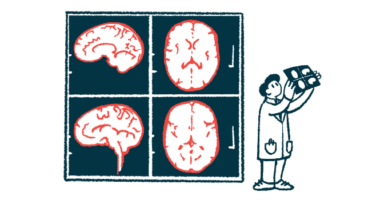Givlaari Shows Safety, Efficacy Over Long-term for Acute Hepatic Porphyria

Long-term treatment with Givlaari (givosiran) is safe and provides sustained clinical benefits to people with acute hepatic porphyria (AHP), according to an interim, two-year analysis of a Phase 3 trial’s ongoing extension, presented at a science conference.
These data are in line with previous trial findings, showing that the therapy can improve the quality of life of patients with AHP, Alnylam Pharmaceuticals, which developed and markets Givlaari, stated in a press release.
AHP is caused by an enzyme deficiency in the process that regulates heme biosynthesis in the liver, heme being an important component of red blood cells. The disorder results in the buildup of toxic porphyrins in the liver.
Givlaari works by disrupting the process through which toxic proteins accumulate inside cells. It targets for destruction the ALAS1 gene’s messenger RNA (an intermediary molecule generated from DNA that is essential for the production of proteins). The degradation of this RNA prevents further production of the ALAS1 enzyme, lowering the accumulation of heme intermediates — the compounds that build in cells to toxic levels — in the liver.
Givlaari is administered subcutaneously (under-the-skin), and was approved in the U.S. to treat adults with AHP in 2019.
At the virtual United European Gastroenterology (UEG) conference, Alnylam gave oral and poster presentations on findings to date in the Phase 3 ENVISION trial (NCT03338816) of Givlaari and its 30-month, open-label extension (OLE) study.
The oral presentation, “Efficacy and Safety of Givosiran in Patients with Acute Hepatic Porphyria – 24-Month Interim Analysis of the Phase 3 ENVISION Randomised Clinical Trial,” focused on interim, 24-month (two-year) data from the extension, where all enrolled are being treated.
In ENVISION’s main trial, 94 patients were randomized to either Givlaari (2.5 mg/kg) or a placebo, once a month for six months. All had active disease, with at least two porphyria attacks within the last six months.
Results showed that Givlaari treatment was associated with reductions in heme intermediate levels, daily pain scores, and opioid use for pain compared with placebo.
Upon completing the main trial, 93 patients entered its extension and continued or started with Givlaari. Data from an interim analysis at 24 months was presented at UEG.
Here, treatment led to a sustained reduction in levels of heme intermediates. The proportion of attack-free patients was also high — 83% in the group on continuous Givlaari use, and 76% among those who moved from placebo to treatment.
Use of hemin — given to ease symptoms of recurrent porphyria attacks — was also lower with Givlaari treatment, with an increasing percentage of patients in both groups going days without needing hemin over these 24 months, compared with percentages at six months in the main trial.
Improvements in physical functioning and quality of life were also reported with Givlaari.
“The ENVISION 24-month interim analysis further confirms that long-term dosing with givosiran [Givlaari] provides sustained and continuous benefit to patients with AHP,” the researchers wrote, adding that its “safety profile … remained acceptable.”
In the poster “Disease Burden in Patients with Acute Hepatic Porphyria: Experience from the Phase 3 ENVISION Study,” the team presented additional findings from the ENVISION trial.
ENVISION’s data were seen to be consistent with prior natural history reports, suggesting that AHP patients have a severe disease burden — namely, a high number of annual attacks (median of eight annualized attacks within the six months before study start), chronic symptoms (52% reporting daily symptoms), comorbidities, and concomitant medication use that includes opioids taken daily or on most days.
“These baseline [study start] characteristics contributed to impaired physical and mental [quality of life] and interference with normal functioning,” they wrote.
Givosiran’s use again led to lower pain scores and analgesic (pain reliever) use during and between attacks.
“Earlier initiation of treatments such as givosiran — which prevent attacks and reduce chronic manifestations of AHP — may lead to improvement in patients’ prognoses,” the researchers suggested.
In the poster “EXPLORE Part B: A Prospective, International, Long-term Natural History Study of Patients with Acute Hepatic Porphyria with Recurrent Symptoms,” researchers presented additional data from the natural history EXPLORE study (NCT02240784), in which 136 patients across 18 countries were observed for up to three years. This study — natural history studies follow a disorder’s “natural” course without a treatment intervention — allowed researchers to better grasp how AHP affects patients’ lives.
“For patients with AHP and recurrent attacks, including patients with relatively few attacks, the burden of disease is high, as evidenced by their having chronic symptoms between attacks and impaired [quality of life],” the research team wrote.







